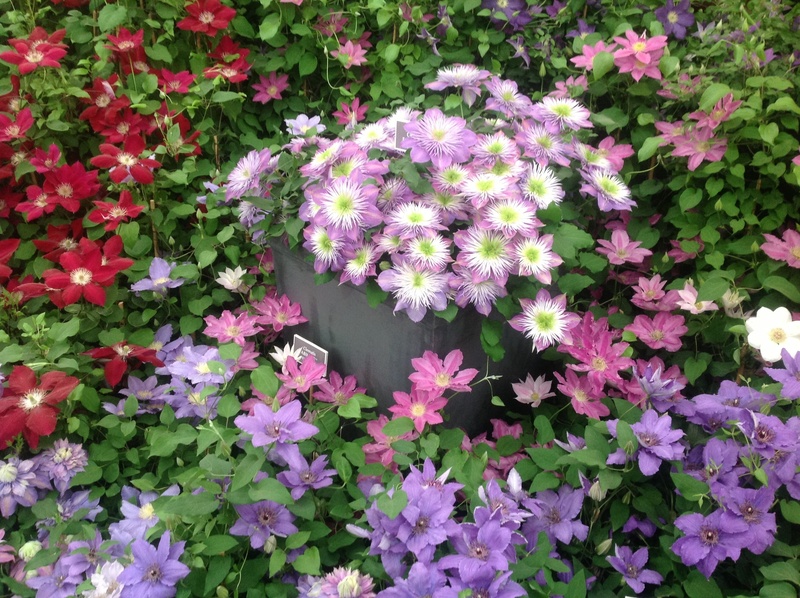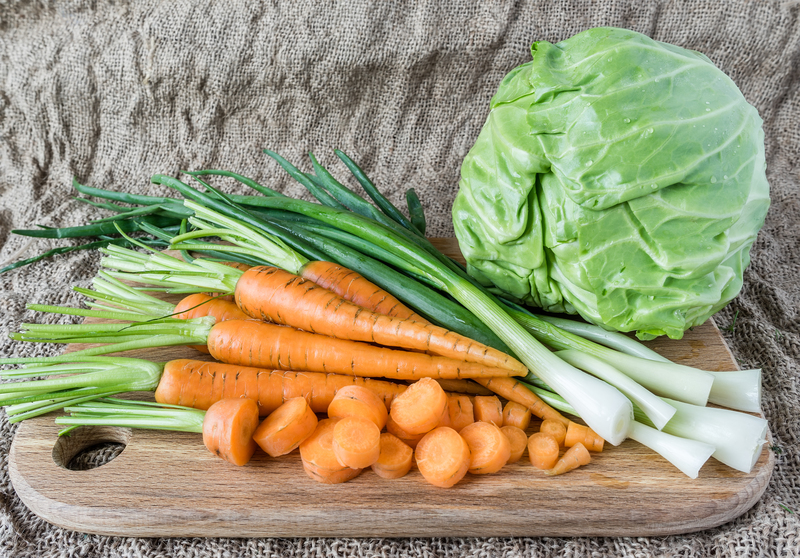Mastering the Craft of Container Gardening
Posted on 29/08/2025
Mastering the Craft of Container Gardening: Your Ultimate Guide
If you've ever longed for a vibrant garden but space, time, or mobility constraints got in the way, container gardening offers an innovative solution. This versatile gardening method is not only visually appealing but also accessible to all skill levels and living situations. In this comprehensive guide, we'll delve into the essentials of mastering container gardening, from selecting the perfect containers and soil, to strategic plant combinations and long-term maintenance.

What is Container Gardening?
Container gardening is the art and science of growing plants--ranging from flowers, herbs, and vegetables to small trees--in pots or other portable vessels. Unlike traditional in-ground gardening, container gardening enables you to cultivate lush greenery on balconies, patios, rooftops, window sills, or even indoors.
Underlining the versatility of this method, it is ideal for urban dwellers, those with limited mobility, or gardeners hoping to experiment before committing to garden plots. Container-based gardening thrives through thoughtful planning and regular attention, making it a perfect hobby for those seeking both beauty and functionality.
Why Choose Container Gardening?
- Flexibility: Move your plants according to changing sunlight, weather, or decorative needs.
- Space-efficient: Ideal for apartments, condominiums, or other small living spaces.
- Easy Maintenance: Minimized weeding, targeted watering, and effortless pest management.
- Creative Freedom: Experiment with diverse plant combinations, colors, and arrangements.
- Seasonal Versatility: Switch out plantings according to season or occasion.
Whether you are a budding enthusiast or a seasoned green thumb, container plant gardening offers an accessible path to a stunning and productive garden.
Getting Started: The Essentials of Container Gardening
1. Selecting the Right Containers
The foundation of successful container gardening lies in choosing suitable containers. Your selection has a major impact on plant health, aesthetics, and garden longevity. Consider the following aspects:
- Size: Ensure each pot is large enough for roots to grow, especially for vegetables or perennials.
- Material: Clay or terracotta pots are breathable but dry out quickly; plastic containers retain moisture but offer less breathability; metal and wooden containers add style but may require lining for durability.
- Drainage: Good drainage is critical. Select pots with holes in the bottom to prevent root rot and stagnant water.
- Style: Match your containers to your outdoor decor and personal taste--go bold, minimalist, or eclectic!
2. The Importance of Quality Soil
Good soil lays the groundwork for any thriving container garden. Unlike ground soil, containers restrict root growth and nutrient absorption, so it's crucial to choose a high-quality potting mix. For optimal results, consider these factors:
- Composition: Look for a mix containing peat moss, perlite or vermiculite, and compost--these components provide moisture retention and promote aeration.
- pH Balance: Most plants favor slightly acidic to neutral soil (around 6.0-7.0 pH).
- Customization: For specialized plants like succulents or orchids, select a substrate designed for their specific needs.
*Tip:* Never use regular garden soil in pots; it's usually too dense, leading to poor drainage and compaction.
3. Choosing the Right Plants for Container Gardening
Plant selection is where the fun truly begins. With thousands of options, keep in mind your climate, available sunlight, container size, and the maintenance level you desire. Popular choices for container garden setups include:
- Herbs: Basil, rosemary, thyme, and parsley thrive in pots and are perfect for kitchen gardens.
- Vegetables: Tomatoes, lettuce, peppers, and radishes are all container-friendly.
- Flowers: Marigolds, petunias, geraniums, and pansies bring color and vibrancy.
- Foliage plants: Ferns, hostas, and ornamental grasses add structure and greenery.
For aesthetics, use the "thriller, filler, and spiller" technique: Thriller plants for height, filler plants for fullness, and spiller plants to trail over edges.
Mastering the Art: Essential Techniques for Container Gardening Success
1. Watering Wisdom
*Proper watering* is both an art and a science in the realm of containerized gardening. Containers dry out much faster than garden beds. Here's how to ensure your plants never go thirsty:
- Check Moisture Daily: Especially in heat, some containers need watering once or even twice a day.
- Water Deeply: Let the water soak through until it drains out the bottom, ensuring all roots are hydrated.
- Self-watering pots: These are handy for those with busy lifestyles.
- Avoid Overwatering: Too much water can suffocate roots. Use a moisture meter if you're unsure.
2. Fertilization and Nutrition
Because nutrients leach out of containers with frequent watering, regular fertilizing is vital in container garden mastery. Apply the following advice:
- Slow-release fertilizers: Mix these into your soil at planting time for consistent feeding.
- Liquid fertilizers: Use every 2-4 weeks depending on plant needs and growing season.
- Organic options: Compost tea or fish emulsion are excellent for organic gardens.
3. Sunlight Strategies
Sunlight dictates what plants you can grow and influences container placement. Track how many hours of direct sun your location receives daily:
- Full Sun: 6+ hours--ideal for most veggies and herbs.
- Partial Sun: 4-6 hours--good for many annual flowers and greens.
- Shade: Less than 4 hours--ferns, impatiens, and begonias perform well here.
*Tip:* Portable pots let you relocate your garden as the seasons and sun shift.
4. Pruning and Plant Health
Regular pruning, deadheading, and pest monitoring keep your container garden flourishing. Best practices include:
- Remove dead leaves and flowers to encourage new growth and maintain aesthetics.
- Check for pests like aphids or spider mites; treat promptly with organic or chemical solutions.
- Avoid overcrowding to reduce disease risk and boost air circulation.
Creative Design Possibilities in Container Gardening
1. Creating Visual Impact
Mastering the craft of container plant gardening allows for artistic self-expression. Some creative ideas include:
- Themed clusters: Group plants of similar shades for monochromatic drama or use complementary colors for a vibrant look.
- Layering: Mix upright, mounded, and trailing plants for dynamic containers.
- Unusual planters: Repurpose vintage barrels, boots, teapots, or baskets for an eclectic appearance.
2. Edible Container Gardens
With the right approach, you can enjoy both beauty and bounty. Edible container gardens suit anyone aiming to grow food in limited space. Some inspiring layouts:
- Herb towers: Stack pots or use vertical planters to maximize herb yield.
- Mix and match veggies: Plant tomatoes with basil and marigolds for a productive, pest-resistant combination.
- Mini orchard: Dwarf fruit trees thrive in big pots and can bear fruit for years.
3. Seasonal and Themed Containers
Rotate plantings with seasons or special occasions for continuously fresh displays:
- Winter: Evergreens and holiday accents (like red twig dogwood and pinecones)
- Spring: Bulbs such as tulips and daffodils
- Summer: Zinnias, sunflowers, and peppers
- Fall: Mums, ornamental cabbages, and pumpkins
Troubleshooting Common Container Gardening Challenges
1. Root Bound Plants
When roots circle the pot and become crowded, plant growth suffers. Remedy this by:
- Gently loosening roots when repotting
- Upgrading to a larger container
- Pruning roots if necessary
2. Soil Drying Out Too Quickly
In hot climates or with porous pots, soil may dry excessively. Increase water retention by:
- Adding organic mulch such as straw or bark chips on top of the soil
- Incorporating water-storing crystals into the mix
- Grouping containers together to create a microclimate
3. Pest Problems
- Check leaf undersides often.
- Encourage beneficial insects like ladybugs.
- Isolate infected plants to prevent spread.
Container Gardening for Small Spaces and Urban Living
Urban gardeners can master container gardening even with minimal space:
- Vertical gardening: Hang pots or install vertical planters on walls and fences.
- Stackable containers: Increase yield without sacrificing floor space.
- Rail planters: Attach to balconies for instant greenery.
Small-scale urban container gardening makes rooftops, patios, and even fire escapes bloom with color and life.
Container Gardening Tips for All Skill Levels
- Start with a few pots and expand your garden as you gain confidence.
- Label your plants to remember varieties and care needs.
- Invest in quality tools: A trowel, watering can, and hand pruners are essential.
- Record your progress: Keep a gardening journal to track what works best for your conditions.

Sustainable and Eco-Friendly Practices
- Reuse and recycle: Choose containers made from recycled materials.
- Harvest rainwater for irrigation.
- Compost food scraps to enrich your potting mix.
- Grow pollinator-friendly plants to support bees and butterflies.
Conclusion: Becoming a Container Gardening Expert
Mastering the craft of container gardening unlocks a world of creative possibilities and practical rewards. With the right planning, ongoing care, and thoughtful design, you can transform any space--big or small--into a lush and productive haven. Whether your goal is abundant kitchen herbs, blossoming flowers, or unique outdoor decor, container gardening delivers satisfaction all year long.
Start with these proven techniques and tips, experiment, and let your own creativity shine. With dedication and a willingness to learn, you'll soon become a true container gardening master, nurturing thriving plants and personalized beauty in every corner of your home.
Are you ready to bring your garden dreams to life--one container at a time?

